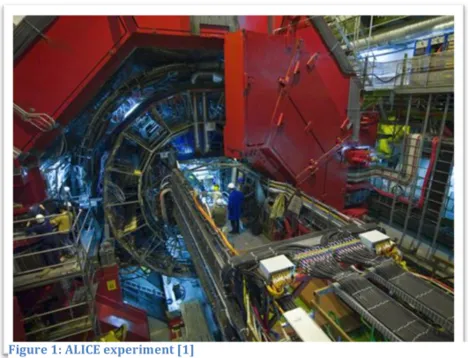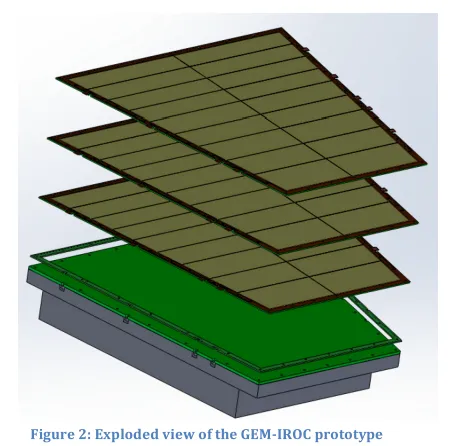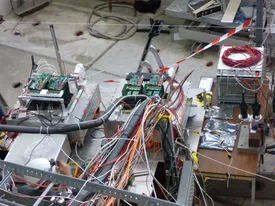ALICE Experiment

ALICE (A Large Ion Collider Experiment) is one of the four major experiments at the LHC (Large Hadron Collider), CERN. It is dedicated to the study of ultra-relativistic heavy-ion collisions. It has been designed to measure, in the most complete way possible, the particles produced in the collisions, so that the evolution of the system in space and time can be reconstructed and studied. The ALICE Time-Projection Chamber (TPC) is the main device, in the ALICE "central barrel", for tracking of charged particles and particle identification. The ALICE TPC is the largest detector of this type in the world and was designed to cope with the highest conceivable charged particle multiplicities. The collisions, which are detected with the TPC, occur approximately 200 times per second and in each collision about 4000 - 12000 charged particles are created [1].
TPC upgrade
ALICE is planning an upgrade during the long shutdowns of the LHC in the next years. The goal is to record Pb-Pb interactions at a rate of 50 kHz from 2018 on, which is a factor ~100 more than the current data acquisition rate. This implies a major upgrade of the TPC, with the replacement of the existing readout chambers (Multiwire Proportional Chambers - MWPC) with the GEM (Gas Electron Multiplier) detectors to substitute the gated read-out with a continuous one. The ALICE TPC is read-out by 36 IROCs (Inner Read-Out Chambers) and 36 OROCs (Outer Read-Out Chambers) trapezoidal chambers placed on each end-cap, in the inner and outer ring of the detector.
What happened so far

A first prototype of GEM-IROC has been built in Munich and already tested. A spare Inner Readout Chamber of the ALICE TPC was equipped with a triple stack of GEM foils in the laboratories at the TU München (see Fig. 2). Two test beam-times have been planned in order to measure the dE/dx resolution of the detector (Proton Synchrotron at CERN) and to prove its stability of operation under the LHC conditions (LHC p + Pb beamtime). The first one was performed to measure the specific energy loss (dE/dx) of 1 - 6 GeV/c particles (electrons, pions and protons). The relative resolution of electrons (pions) was measured to be <10% (<11%), still without corrections of T/p variations. For comparison the resolution of the currently used MWPC-IROC is ~9.5%. The second test was performed at LHC during the main ALICE p + Pb beamtime. The prototype was mounted in the ALICE cavern, near the interaction point. The goal of the experiment was to check the stability of operation under the LHC conditions. Data analysis from this experiment is ongoing. Both test-beams were very successful. The results will be used for the further R&D of the detectors.
Future plan
The full upgrade of the ALICE TPC is planned to be finished in 2018, after the second long shutdown of the LHC. Until that time, 2x18 IROC and 2x18 OROC chambers must be equipped with GEM foils. Since our groups at the Cluster are responsible for the prototype development, the next step of the project consists of the further improvement of IROC and preparation of the OROC prototypes References: [1] http://aliceinfo.cern.ch/
Pictures of the IROC chamber

